Write your awesome label here.
There is No Failure, Only Feedback
One of my favorite quotes is by Robert Allen, “There is no failure. Only feedback.”
That’s the mindset shift you need before diving into the Johari Window. This mental model is all about learning who you are through honest reflection and clear feedback from others. If you can approach this with curiosity instead of defensiveness, you’ll gain insights that can change your life.
The Johari Window is a simple but profound way to explore your traits, your abilities, and your personality. It helps you see what is obvious, what is hidden, and what is waiting to be discovered.
What is the Johari Window?
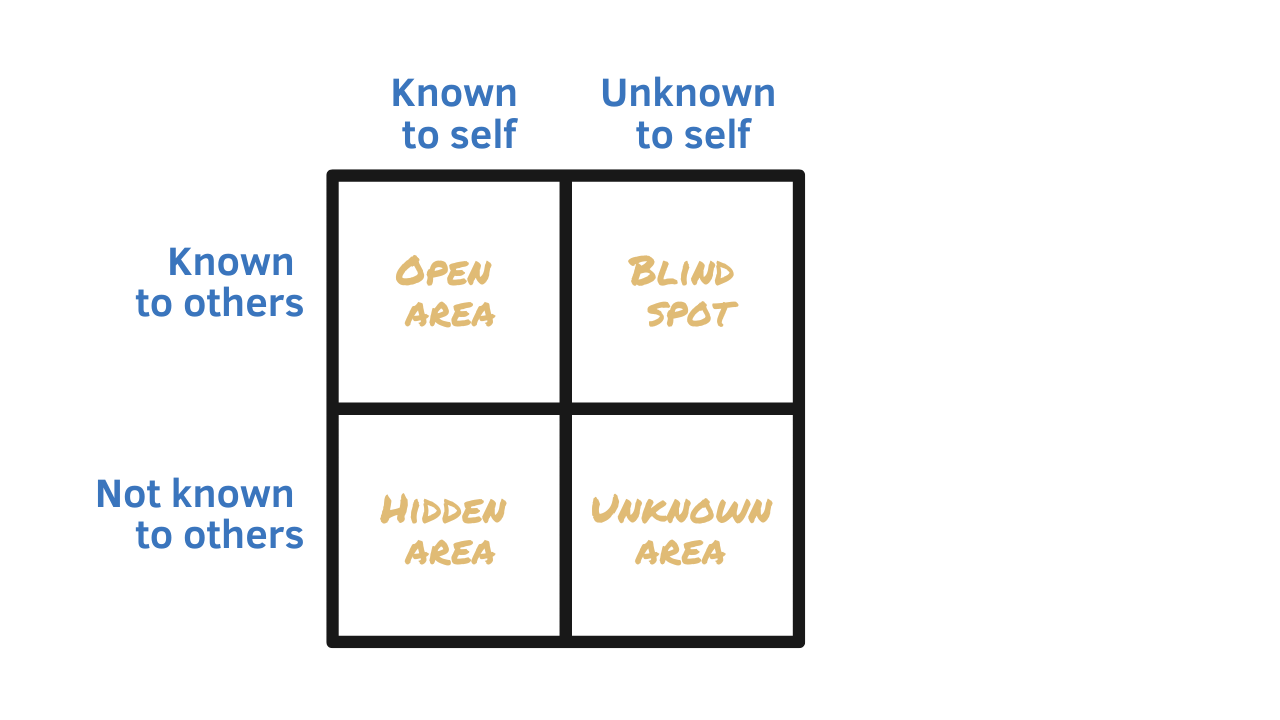
The Johari Window is a visual mental framework created to improve self awareness, self reflection, and relationships. Imagine a window divided into four panes. Each one reveals a different part of who you are. Let's get into it:
Open Area
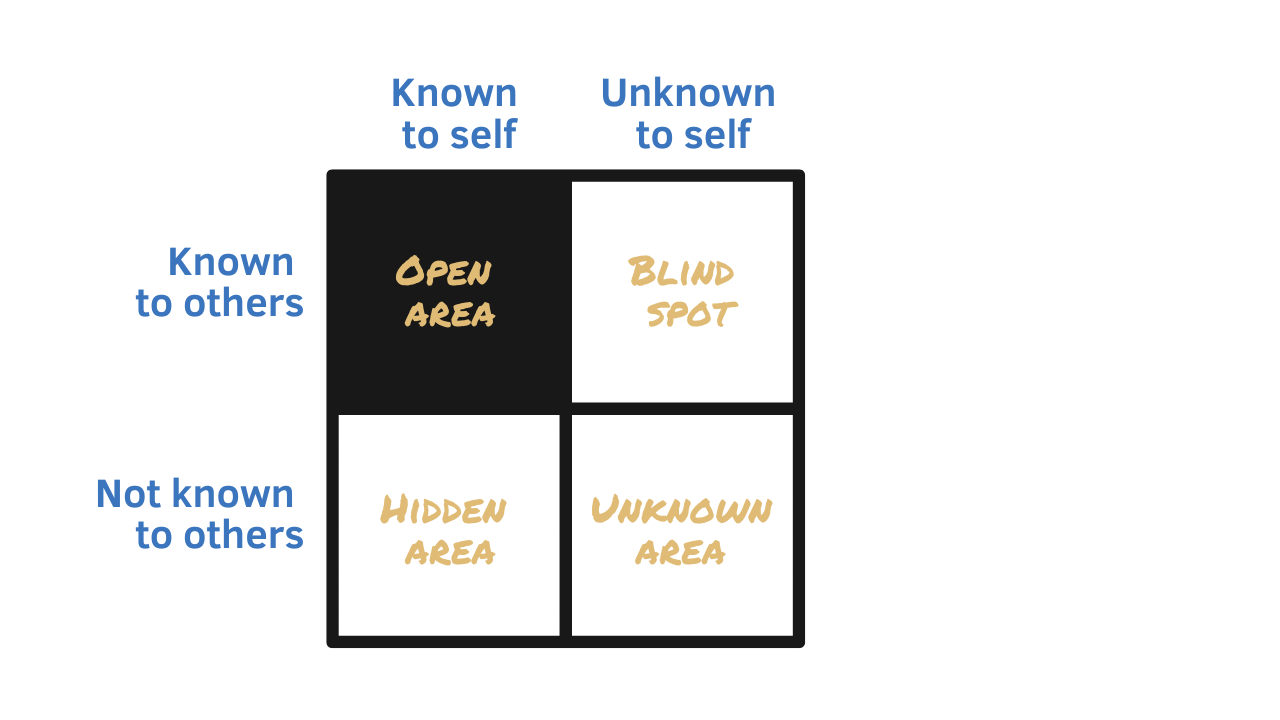
This is what you know about yourself and what others know too.
For example, maybe you know you’re funny, and others see it as well. The more you expand this area, the stronger your relationships can become, because there’s alignment between how you see yourself and how others see you.
For example, maybe you know you’re funny, and others see it as well. The more you expand this area, the stronger your relationships can become, because there’s alignment between how you see yourself and how others see you.
Blind Spot
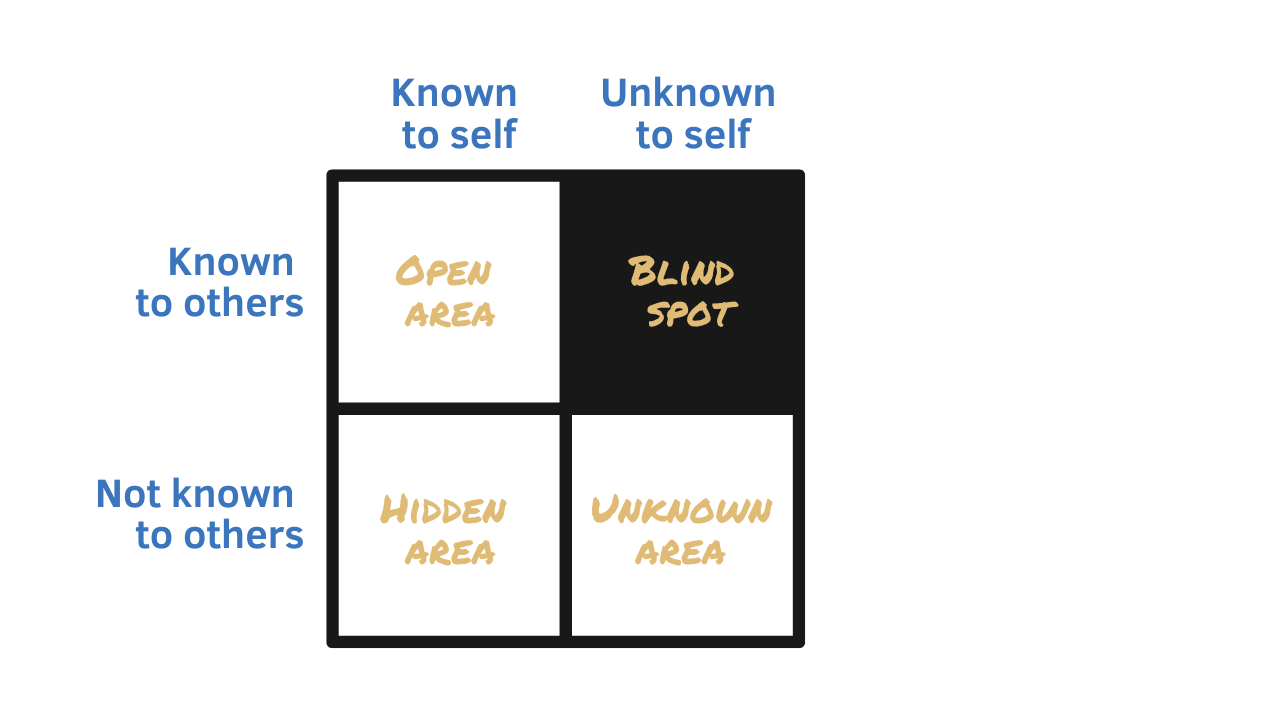
These are things others notice about you, but you are unaware of. Maybe you get defensive in certain situations and don’t even realize it. Blind spots are where real feedback can spark growth.
Hidden Area
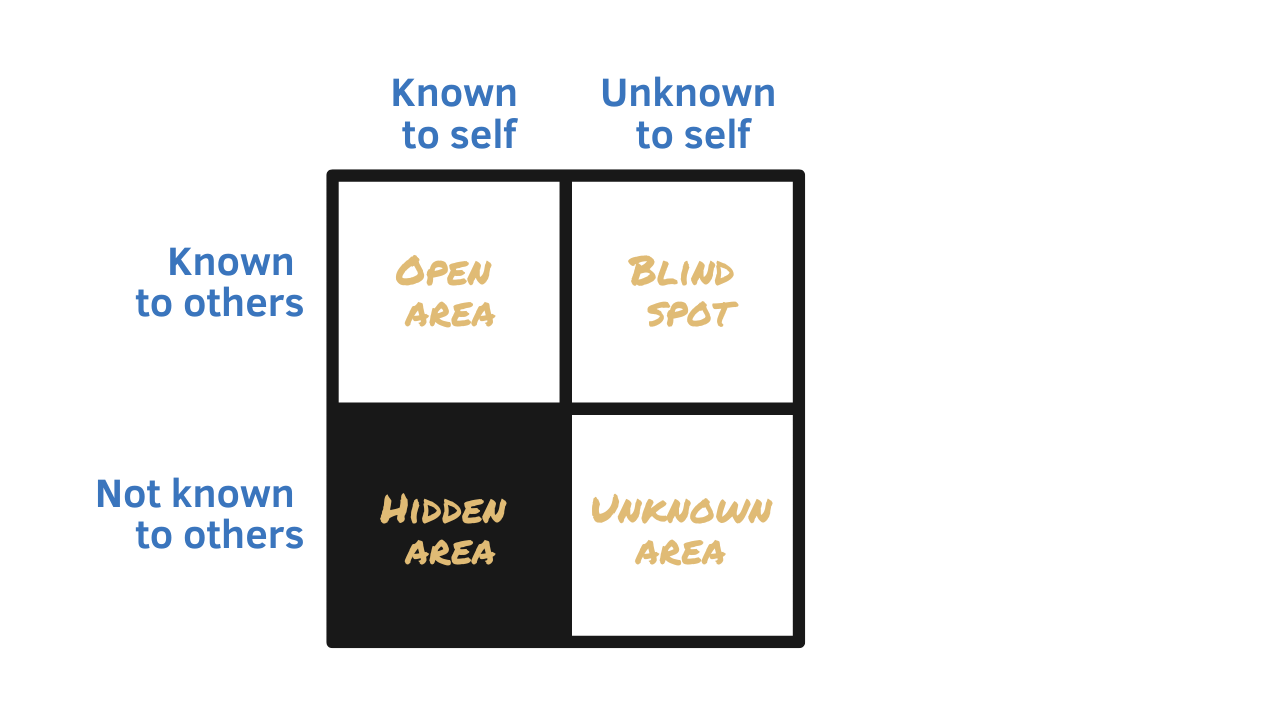
This is what you know about yourself but choose to keep private. It could be fears, insecurities, or even dreams you’re not ready to share. Sometimes revealing parts of this area can deepen trust and connection.
Unknown Area
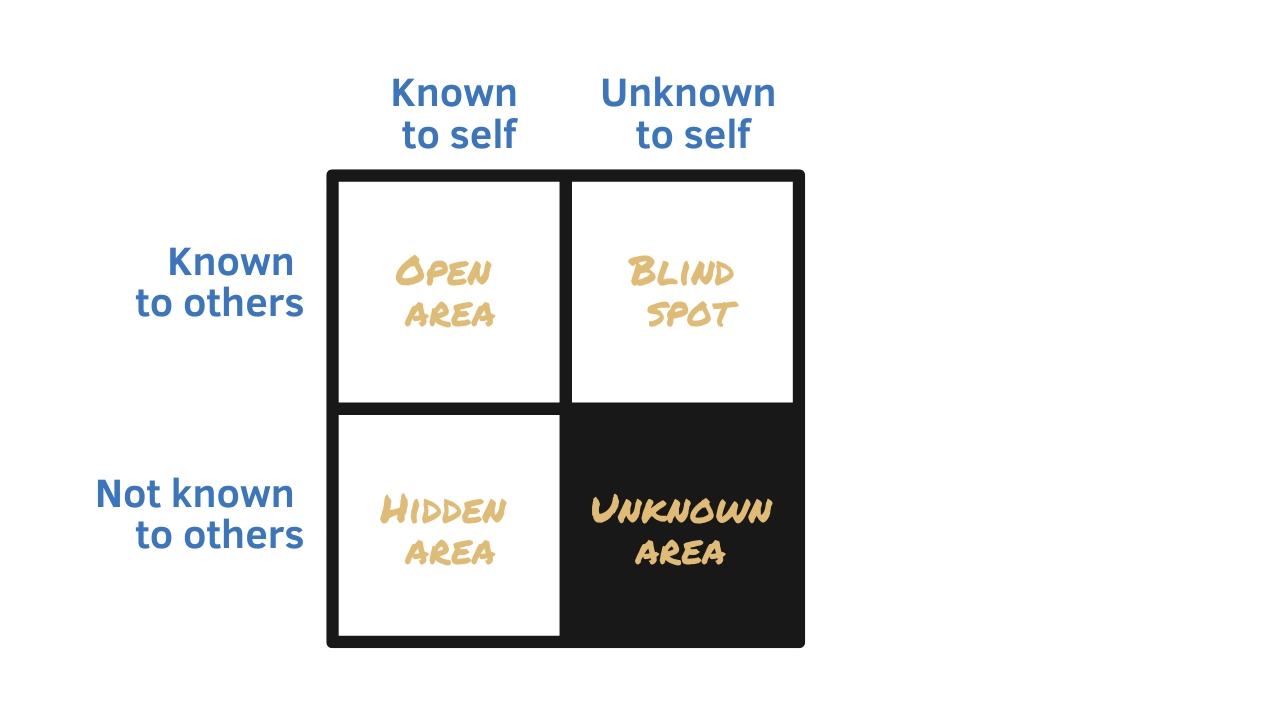
This is the exciting one. It’s made up of traits, abilities, and parts of your personality that neither you nor others know about yet. This is where untapped potential lives, waiting to be uncovered through new experiences and challenges.
Why the Johari Window Works
Self awareness is not just about looking inward. It’s about bridging the gap between how you see yourself and how others see you. This is why the Johari Window works so well. It combines introspection with real feedback from people you trust.
When you get feedback and reflect on it, you begin to close the gap between perception and reality. You also open the door to mindset shifts that improve how you show up in relationships.
How to Apply the Johari Window
Before you start, I want to preface that this process requires honesty, trust, and courage. Since you’ll be giving and receiving feedback, choose people who genuinely want the best for you and who know you well.
Step 1: Expand Your Open Area
Write down your traits, strengths, weaknesses, and behaviors that you are aware of. Then, ask a friend or colleague for their perspective. Compare notes and highlight the ones you both agree on. This creates a clear picture of your open area.
Step 2: Explore Your Blind Spots
This can feel uncomfortable, but it’s where growth happens. Ask trusted people for candid feedback on what they see in you that you might not notice. Write it down. This is your opportunity to see yourself through their eyes.
Step 3: Reflect on Your Hidden Area
List the things you keep to yourself. Ask yourself why you choose to keep them hidden. Would sharing them with someone you trust bring you closer or give you relief?
Step 4: Embrace the Unknown Area
Step into situations that challenge you. Try a new skill, join a group, or travel somewhere unfamiliar. By getting comfortable with discomfort, you reveal strengths and traits you didn’t know you had.
Step 5: Revisit and Grow
Your Johari Window changes as you grow. This is why revisiting it regularly can be beneficial. This is not a one-time exercise, but an ongoing journey of self reflection and introspection.
The Power of Vulnerability
Vulnerability is often misunderstood. Many think it’s a weakness, but in reality it’s an act of courage. Being open to feedback, sharing your hidden areas, and stepping into the unknown requires strength.
When you approach the Johari Window with openness, you give others permission to do the same. That’s how deeper trust, better relationships, and stronger connections are built.
Making the Most of the Johari Window
Here are a few tips to make this mindset framework work for you:
- Ask the right people for feedback. Find people who you believe have your best interest at heart, not just those who will tell you what you want to hear.
- Listen without defending yourself. Feedback is not an attack, it’s a gift.
- Take notes so you can reflect later. Insights often deepen over time.
- Act on what you learn. Self awareness without action won’t create change.
Unlocking Your Potential
The Johari Window is more than just a mental model. It’s a tool to help you see yourself more clearly, strengthen your relationships, and unlock potential you didn’t know you had.
When you start combining honest self reflection with clear feedback from others, you not only grow as a person, you help others grow too. Your willingness to explore blind spots, share hidden parts of yourself, and step into the unknown will transform how you see yourself and how others experience you.
Try to remind yourself that: there is no failure here, only feedback. The more you embrace that, the more you will expand your self awareness and open new possibilities in your life.
Sincerely,
Dexter Lam

Do you want to level up and change your life Trajectory?
We're launching our course on Self-Awareness
Thank you!
